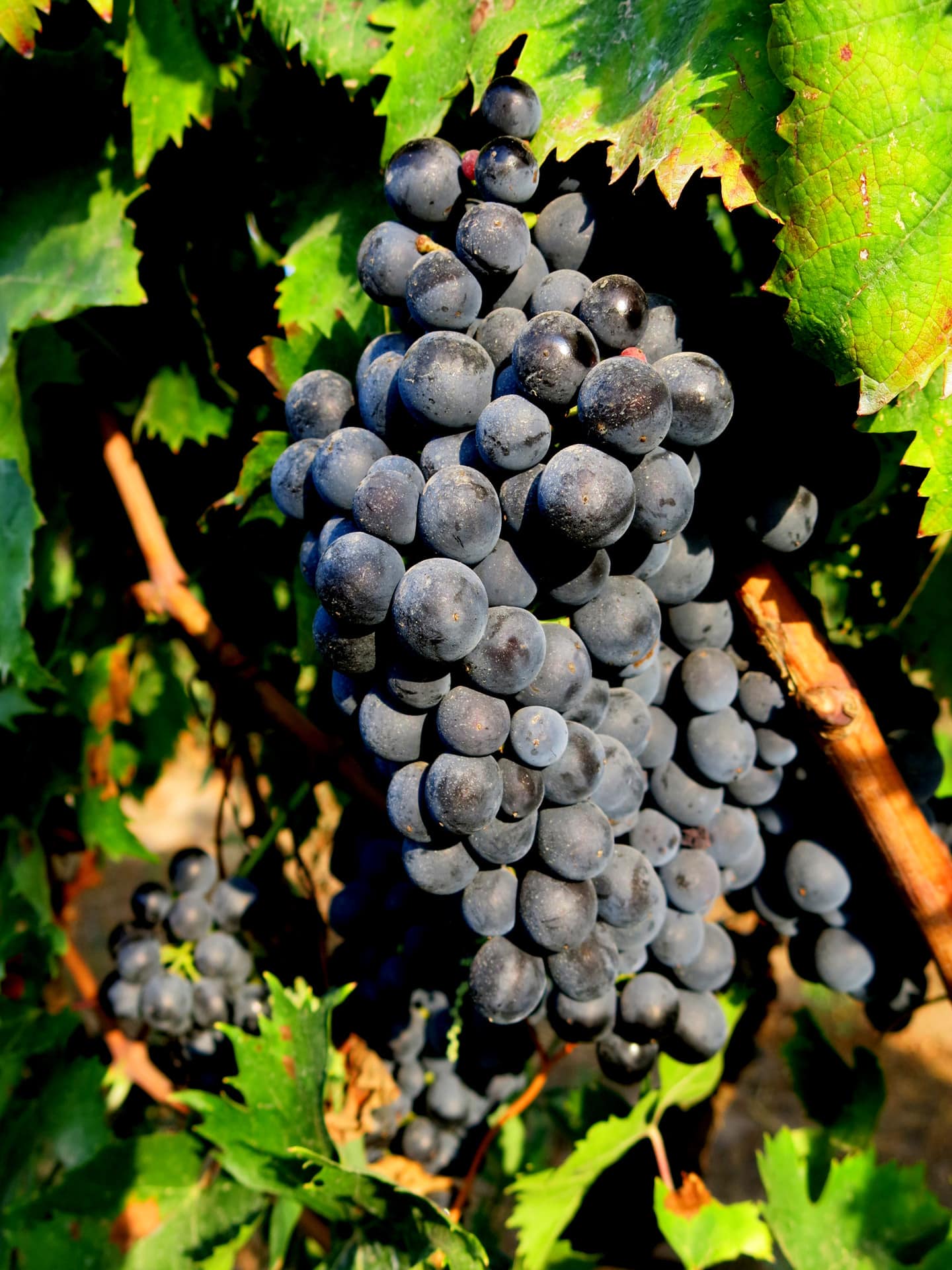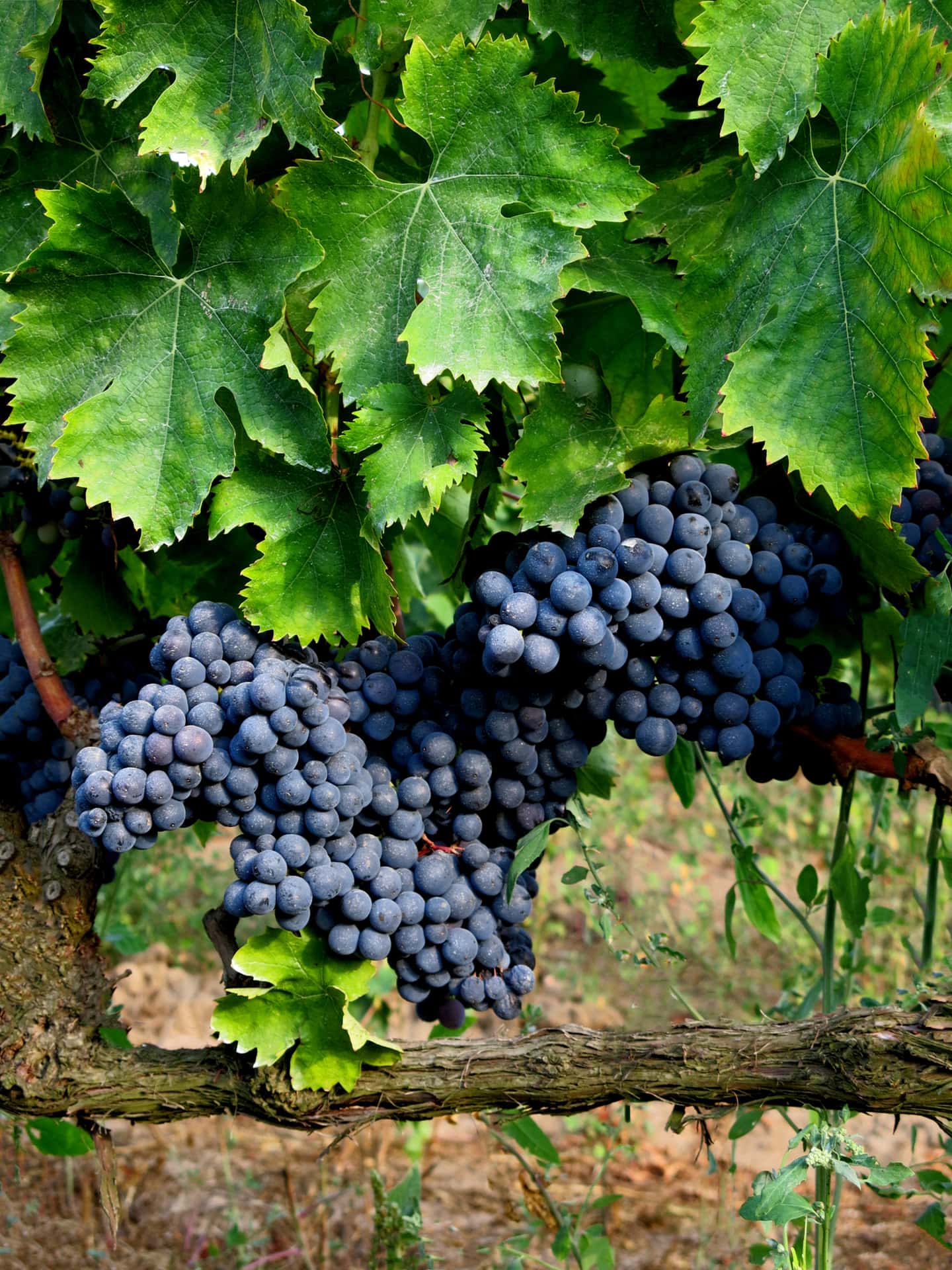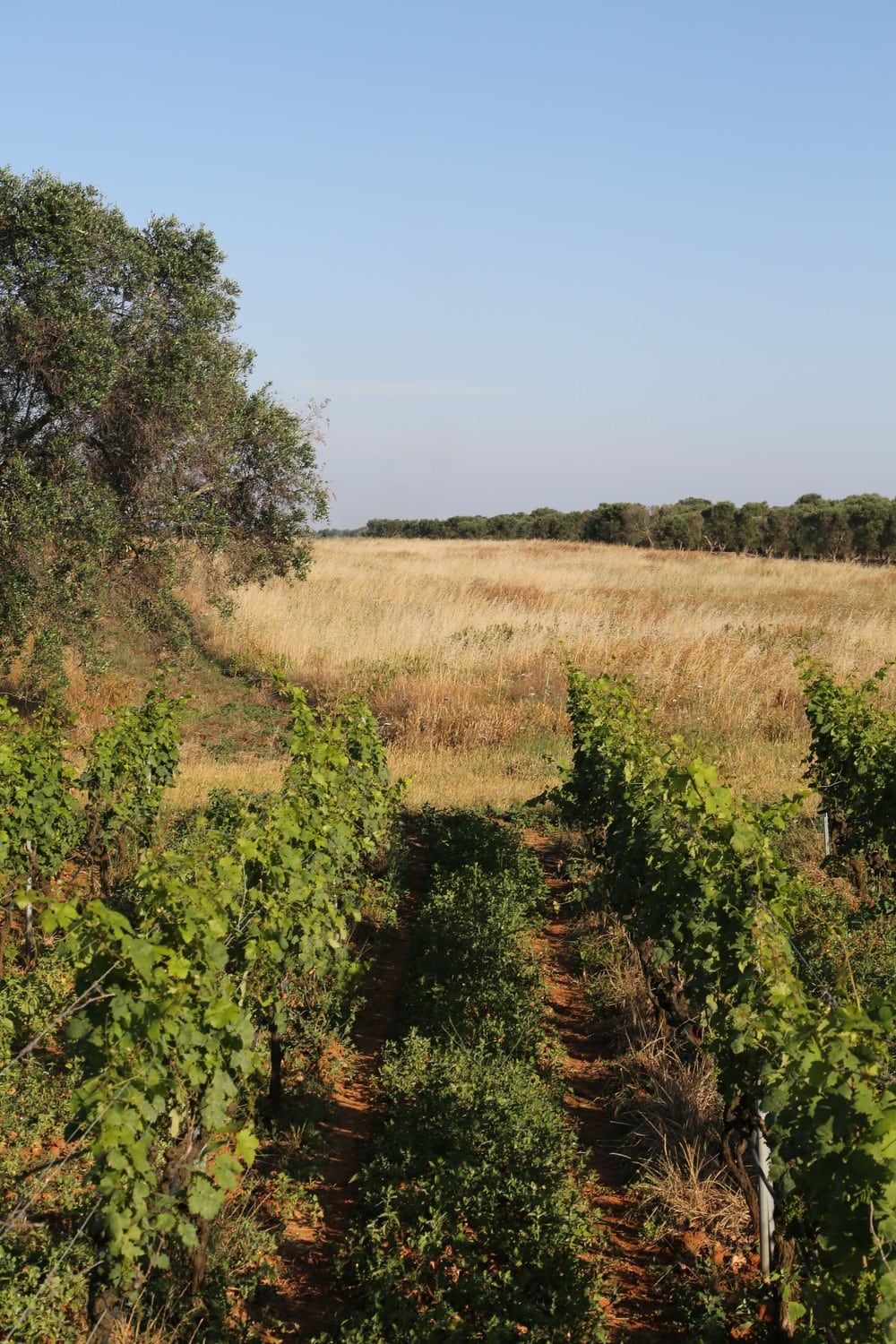
Primitivo, a strong personality wine
It is one of the oldest vines in our area. Salento is his chosen land, but its origins lie on the other side of the Adriatic. It seems to have been brought to Italy about two thousand years ago, at the time of the Crusades, by pilgrims on their way to the Holy Land.
Primitivo has found here in Salento an almost perfect habitat to grow at its best and produce healthy grapes of excellent quality. Even the sea has certainly played an important role in its success: cultivated in land close to the coast, this vine welcomes breezes and scents that enrich its great variety of aromas.
Primitivo takes its name from the early ripening of its grapes, harvested between the end of August and the beginning of September. Its bunches are easily recognized by their compactness and their round and blue berries. Its ideal climate is dry heat since the bunch, due to its peculiar characteristics, fears prolonged humidity which would facilitate the development of harmful molds on the berries.
The result is wines of great body and structure, characterized by an alcohol content which can be very high if allowed to over-mature. The most refined oenology, on the other hand, seeks elegance in spite of the brute strength of the high gradations; in fact, the balance and the right acidity also allow it to age for a long time.
Until recently, Primitivo was mostly used as a blending wine for other northern wines and sold wholesale, hence the need for high alcohol content as the price was based on the alcohol content. In last decades, as a result of new production philosophies, it has found the place it deserves in the best production of Salento cellars.
We have done our part in promoting this vine, because we were among the first to vinify it in purity in 1975, with Vigne Vecchie, and to specify the wording “Primitivo” on the label.
Unlike Negroamaro, it is a low acidity vine and that is why we only use it to produce red wines. We offer four versions, all organic and vinified in purity. In addition to the aforementioned Vigne Vecchie we have Beomondo, 900 Primitivo and Burdi.
These four labels identify different nuances in the bouquet and body of the wine, obtained from selection, time of harvest and vinification.
Negroamaro, the main grape variety in Salento
Negroamaro is one of the best known and most appreciated Apulian wines in the world. Introduced in Puglia by the Greeks since the 7th century BC. by the Hellenic colonists, there are more historical interpretations regarding the origin of its name. The most supp orted and likely is that the name derives from the union of two dialectal terms niuru and maru, one coming from the Latin (niger) and another Greek (mavros) which are both simply translated with the word “black”.
Therefore, “black-black“.
What is certain is that its flavor is definitely unique, inimitable as well as its scent.
The Negroamaro vine has bunches of medium size, conical in shape, with tight densities, short in size and without wings. The berries are large, with thick black skins and violet veins.
Negroamaro prefers calcareous soils, but also likes a good presence of clay that isable to retain the water that flows abundantly in the Apulian subsoil. The harvest takes place later than the primitive, between September and October.Thanks mainly to its high concentration of sugars,as well as Primitivo in the past it was mainly used to cut winemix one or to be used to produce wines in purity.

Our cellar produces three labels obtained from the vinification of Negroamaro purity, all certified organic: Nativo, whose name underlines the typicality and the natural belonging to theterritory where its vine has be en cultivated for centuries; Pìutri, from the name of a plot called “delli Piutri” in the countryside of Torchiarolo, between Lecce and Brindisi, 200 meters from the Adriatic Sea, where we have owned the vineyards since 1100; 900 Negroamaro, a long-lived wine, elegant, rich and intense, which expresses with great finesse the best qualities that the famous grape can offer. From the rosé and white vinification of Negro amaro, the white Taersìa900 Negroamaro Bianco and the rosé Campo di Mare are born.

Malvasia Nera, an Apulian rarity
Malvasia is the name that denotes different vines, mostly white and not always related to each other.The reasons are to be found in history, in the port city of the Peloponnese called Malvasia in Italian and Monemvasia in Greek, which in ancient times was a crossroads for Mediterranean wines. From there thesewines arrived in Europe by ship, and of course the Venetians played a key role in this trade. In Venice the word “malvasia” ended up identifying shopswhere “navigated” wines, that is imported wines, were sold, and gradually becamesynonymous with sweet and aromatic wine.
The commercial success of the Malvasia family led many producers to create similar wines from different grape varieties, and this explains why there are so many varieties with the same name today. Among these two rarities stand out: Malvasia Nera di Brindisi and Malvasia Nera di Lecce, native Apulian cultivars from which superb wines are derived.
Our family has a special bond with Malvasia Nera. In fact, we have always used it to produce a rosé for our personal use, recently marketed under the name of Malìa Rosa.
Malìa, a pure black Malvasia, instead originates from an inspiration. In our ancient cellar, among other things, we keep some nineteenth-century bottles of Primitivo, Negroamaro and Malvasia Nera in purity.
We therefore decided in 2000 to resume this once elite production for in 1988 we had dedicated several hectares of our estate to the vine.
Malvasianera was and still is usually planted together with the Negroamaro in a percentage of 15-20% making the selection difficult during the harvest for which it was a rare wine.
Finally, we decided to celebrate the nine centuries of our family’s business with 900 Malvasianera, a surprising long-aged and particularly fine wine.

